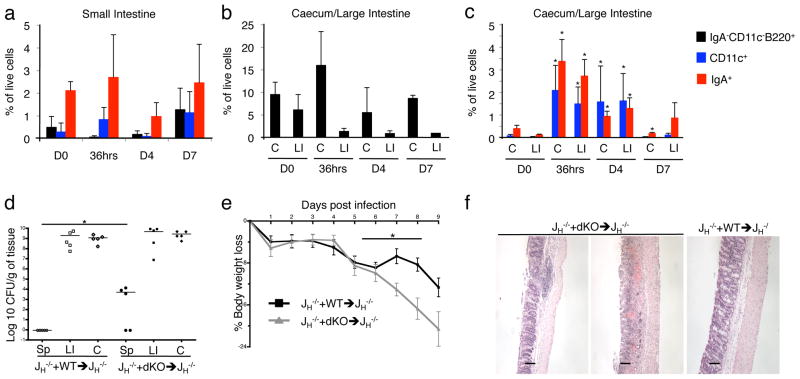Figure 4. iNOS/TNFα double-deficient mixed chimeras are more susceptible to infection with Citrobacter rodentium.
AID-YFP animals were infected by oral gavage with 1×109 colony-forming units (CFU) of a nalidixic-acid resistant strain of Citrobacter rodentium DBS100. a–c, The kinetics of accumulation of viable YFP+IgA−CD11c−B220+ (black bars), YFP−CD11c+ (blue bars) and YFP+IgA+ (red bars) cells in the small intestine, the caecum (C) and the large intestine (LI) as analyzed by flow cytometry (day 0 (D0), 36 hours (36hrs), day 4 (D4) and day 7 (D7)). The percentages of viable cells as mean values and SD are shown (n = 4). A representative example of two individual experiments is shown. d, The colonization by C. rodentium was determined 9 days after infection by homogenizing spleens (Sp), large intestines (LI) and caecums (C) followed by serial dilution plating on nalidixic acid-containing LB plates and counting of colonies. C. rodentium colonization of spleen (Sp) is significantly enhanced in dKO mice at day 9 post- and at D4 post-infection (data not shown). Data are representative of two individual experiments. e, The percentage of body WT + JH −/− →RAG−/− and dKO + JH −/− →RAG−/− mixed chimeras after C. rodentium weight loss in infection over time is depicted. Significantly increased body weight loss was observed in dKO mice from day 6 to 9 post-infection (n=5–12 per group). NB: dKO + JH−/− mixed chimeric mice were sacrificed 9-days post infection for humane reasons as weight loss exceeded 20% of their original body weight. f, Large intestines (LI) from WT + JH−/− and dKO + JH−/− mixed chimeric mice were harvested 9 days post-infection and the pathological scores were analyzed by standard histological staining procedures using hematoxylin and eosin (H&E). LI’s from dKO + JH−/− mice show more severe LI pathology. H&E stainings of two representative dKO mice with a moderate and a more severe condition, as well as one representative WT + JH−/− chimeric mouse are shown. The panel shows the original magnification of 100 x. Scale bars represent 100 mm. * p < 0.05.

